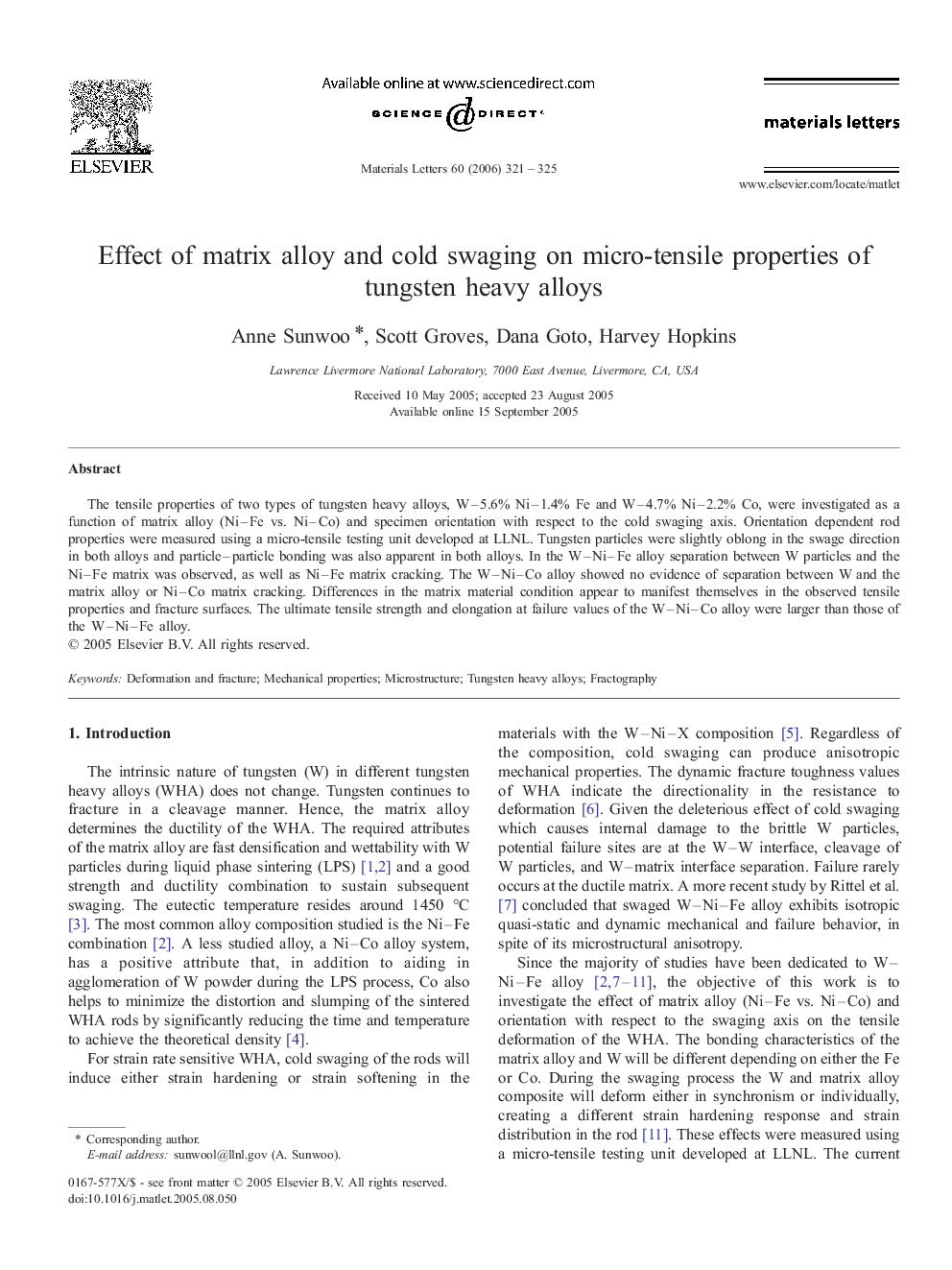| Article ID | Journal | Published Year | Pages | File Type |
|---|---|---|---|---|
| 1654487 | Materials Letters | 2006 | 5 Pages |
The tensile properties of two types of tungsten heavy alloys, W–5.6% Ni–1.4% Fe and W–4.7% Ni–2.2% Co, were investigated as a function of matrix alloy (Ni–Fe vs. Ni–Co) and specimen orientation with respect to the cold swaging axis. Orientation dependent rod properties were measured using a micro-tensile testing unit developed at LLNL. Tungsten particles were slightly oblong in the swage direction in both alloys and particle–particle bonding was also apparent in both alloys. In the W–Ni–Fe alloy separation between W particles and the Ni–Fe matrix was observed, as well as Ni–Fe matrix cracking. The W–Ni–Co alloy showed no evidence of separation between W and the matrix alloy or Ni–Co matrix cracking. Differences in the matrix material condition appear to manifest themselves in the observed tensile properties and fracture surfaces. The ultimate tensile strength and elongation at failure values of the W–Ni–Co alloy were larger than those of the W–Ni–Fe alloy.
